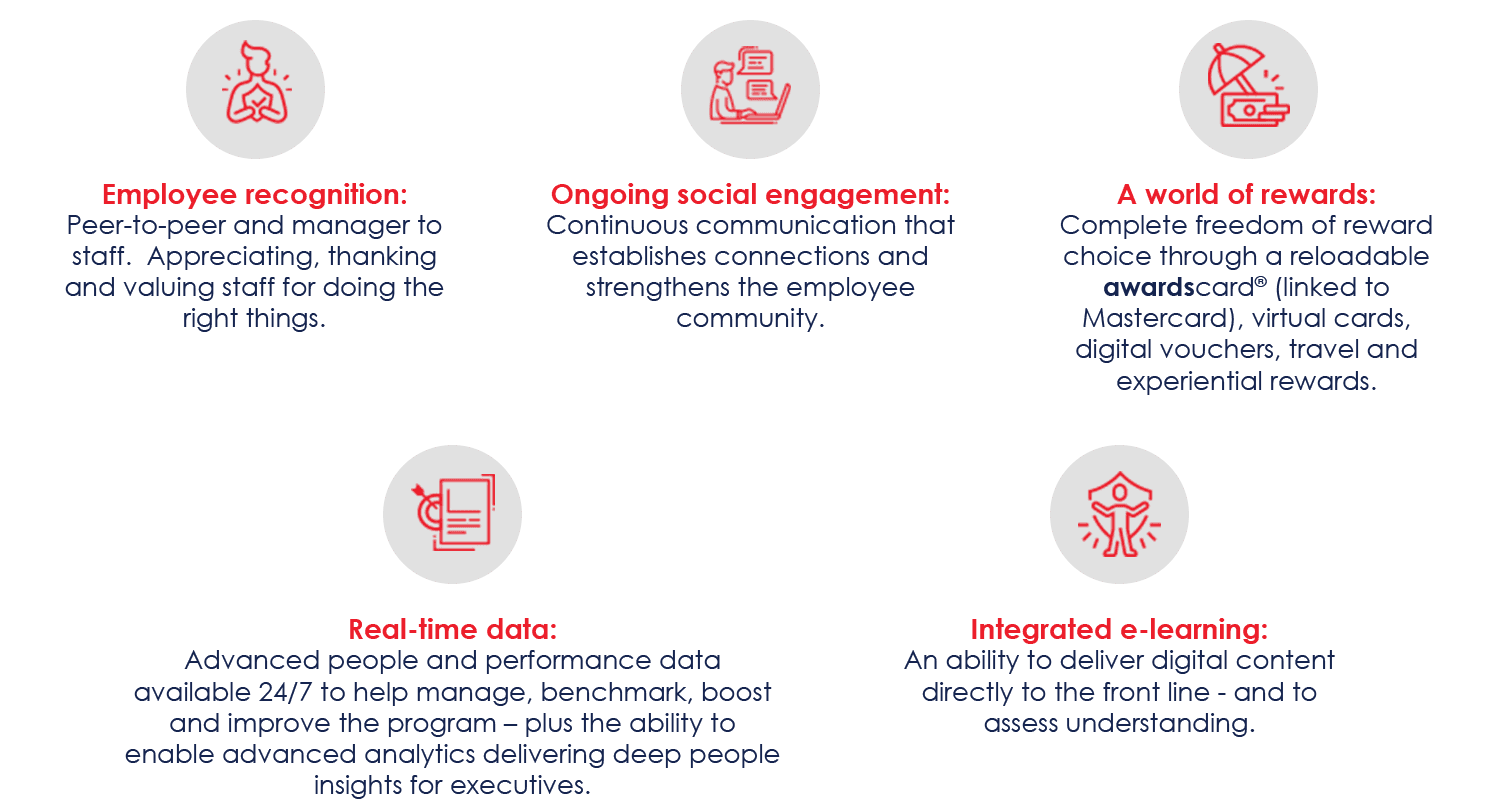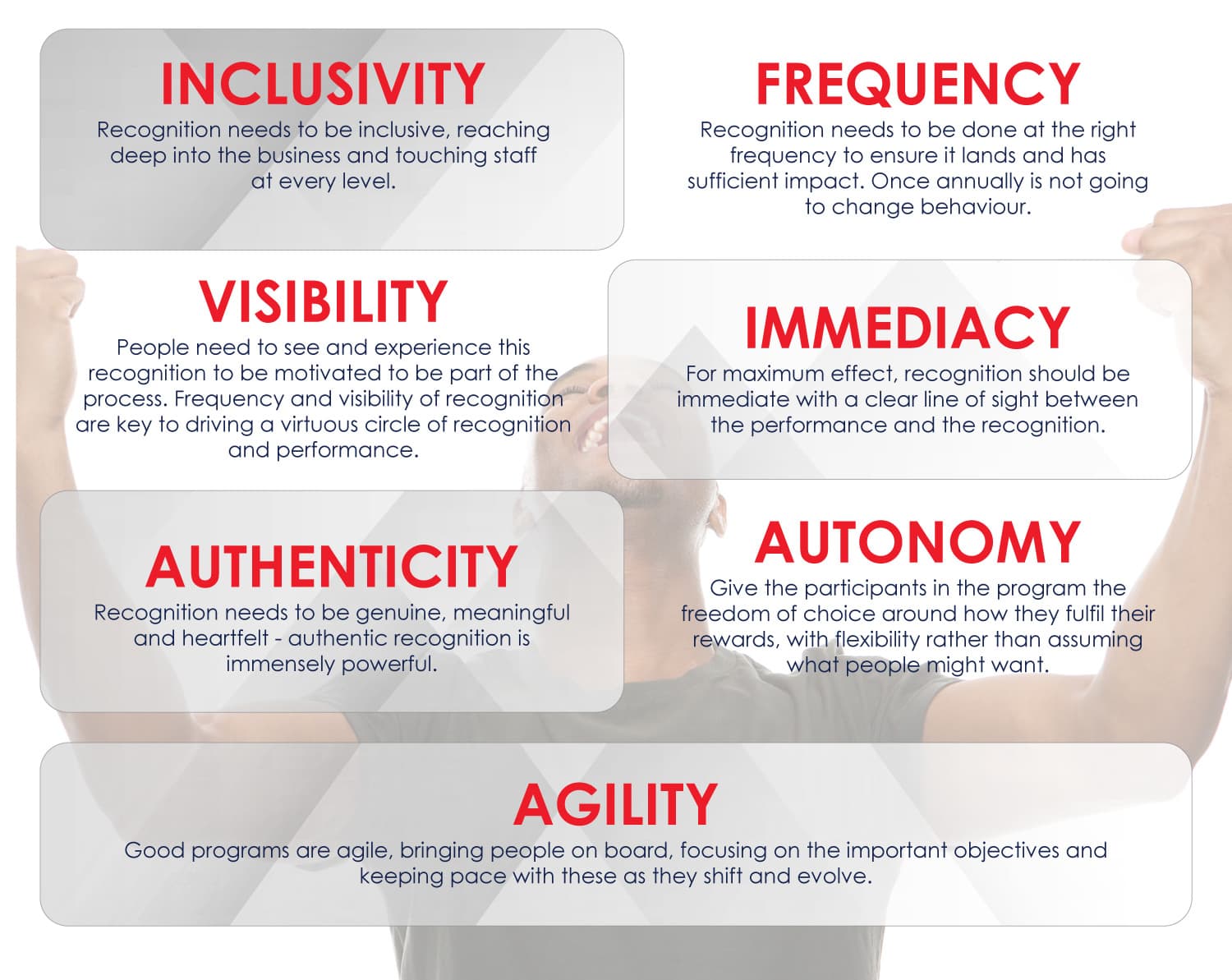
Hyper-personalised rewards make hyper-loyal customers

Why annual awards don’t work anymore – The shift toward real-time recognition

Sustainable incentive travel: a guide to responsible performance rewards


Achievement Awards Group, specialising in the design and implementation of end-to-end human engagement solutions, developed a highly successful employee recognition program – achieve – for its 320 employees, nearly half of which work in their customer call centre.
A nine-box system, that draws extensively on RPI Best Practice Standards®, was developed as a guiding framework to ensure each component of a successful recognition program is properly considered during development. Program results have exceeded industry standards with survey results showing that employees feeling valued in the organisation increased from 53% to 72%.
The ‘achieve’ in-house recognition program won two prestigious, international awards in 2022 – ‘Best Recognition Program’ at the IA22 event in London and the ‘Pinnacle Award’ for demonstrating best practice in all seven program categories, by Recognition Professionals International (RPI) in the USA.

Achievement Awards Group unpacks the case study for its award winning ‘achieve’ recognition program – detailing what goes into the making of a successful recognition and rewards program for employees.
“An effective rewards and recognition program helps businesses achieve their strategic objectives by attracting and retaining talent, increasing employee engagement and morale, aligning employee behaviour with business objectives, and fostering a sense of ownership and accountability.
Yet, despite their value and proven efficacy, employee recognition and rewards programs remain one of the most underutilised levers when it comes to achieving business objectives and driving organisational cultural and behaviour change.
This underutilisation stems from a number of factors – firstly a lack of appreciation for the significant ROI that effective recognition programs offer, internal program ownership, leadership involvement and role-modelling, dated or inadequate enabling technology and the sustainability aspect of driving the program and keeping it fresh, current and top of mind,” explains Kevin Skinner, Business Director of Employee Engagement at Achievement Awards Group.
Employee rewards and recognition programs should drive the achievement of business objectives and living of company values:
Achievement Awards Group has developed an end-to-end solution that brings together strategy, tactics, technology, implementation and management in a cohesive process for the delivery of recognition programs that work. The mechanics are unpacked below…
The achieve program hinges off bountiXP, AAGroup’s proprietary technology platform that underpins and supports all its recognition programs. The core platform functionality brings together five key features:

In developing its employee recognition programs, the bountiXP platform aligns two key fundamentals:
“The alignment of culture to business strategy is critical – the best business strategy is unlikely to be achieved if the culture of the business is not right and the workforce not engaged.
The bountiXP alignment model recognises this key aspect, and hence the program drives both performance and values-based recognition, with equal measure. It’s about recognising and rewarding people for the right behaviour in terms of culture, values and practices, which ultimately feeds into the strategy side of the model, and rewarding and recognising people for achieving specific business goals, objectives, and tasks,” explains Skinner.
While tangible rewards and compensation benefits are a key part of any employee engagement strategy, recognition is equally important in the total rewards mix, if not foundational. But recognition in organisations is often not done well. When formulating an employee recognition strategy, there are seven key principles that need to be fulfilled in order to optimally drive behavioural change.

A typical recognition and reward framework spans both informal and formal recognition, starting from social recognition which sits at the bottom of the reward pyramid and which drives company values and behaviours, then performance recognition and reward driving company values and business goals, to recognition celebrations and events which encompasses divisional recognition through to an annual pinnacle event with CEO recognition – with each stage of recognition increasing in its formality.

“The nine-box systems framework starts with getting the right people in place to manage and drive the program, setting the right goals for recognition and engagement, and then setting up the measurement framework. It then moves into the operational aspects of launching and onboarding people, the crucially important communication and ongoing sustainment of the program, and then training and equipping people to engage.
In terms of rewards, we have provided the flexibility that our people want, as well as the enabling technology that facilitates the entire program in a transparent, seamless and analytical manner. Finally, we have built in the feedback and measurement loops required to drive continuous improvement – this is the anatomy of a successful recognition program and how we’ve been able to achieve best practice in the programs we implement on behalf of our clients,” explains Skinner.
In terms of the achieve recognition program, the following results were achieved:
“In making recognition and rewards a mainstream pillar of your business strategy, make sure your program addresses the aspects of awareness, strategic alignment to business objectives, leadership support, consistent implementation and communication, resources and feedback,” concludes Skinner.
The folks at our technology partner, bountiXP, are thought leaders in employee recognition and rewards.
They’ve created a comprehensive 10-step guide, providing resources to help you create a top notch recognition program so you can start recognising and rewarding your employees to foster a culture of appreciation and achieve optimal employee engagement levels within your organisation.